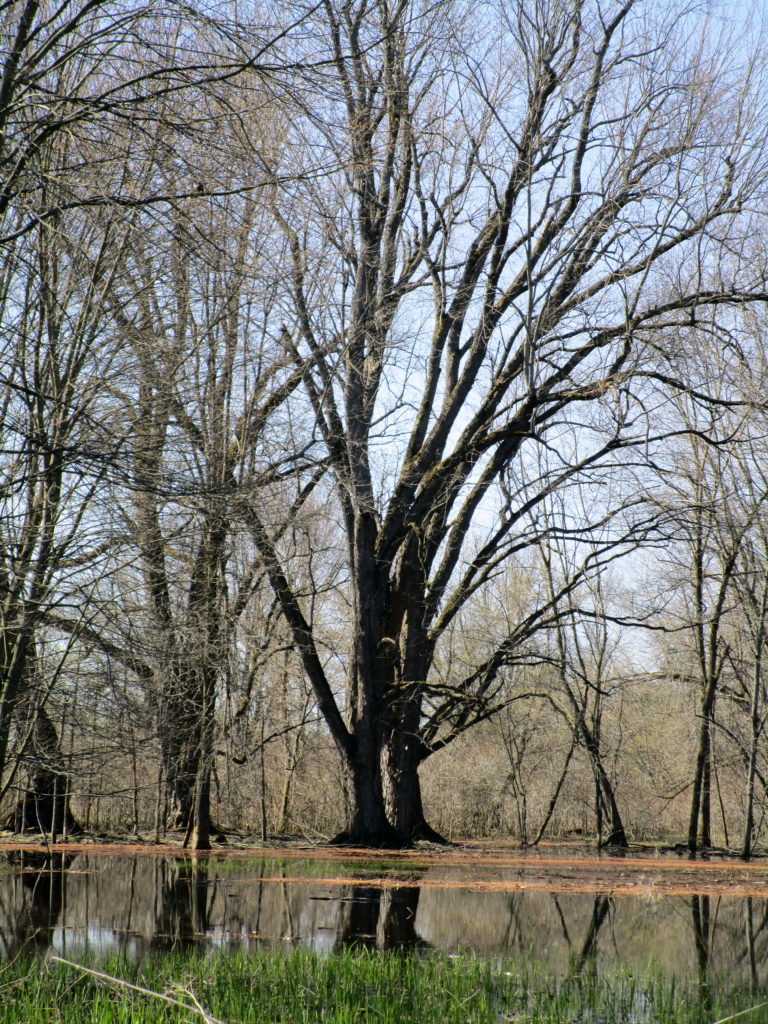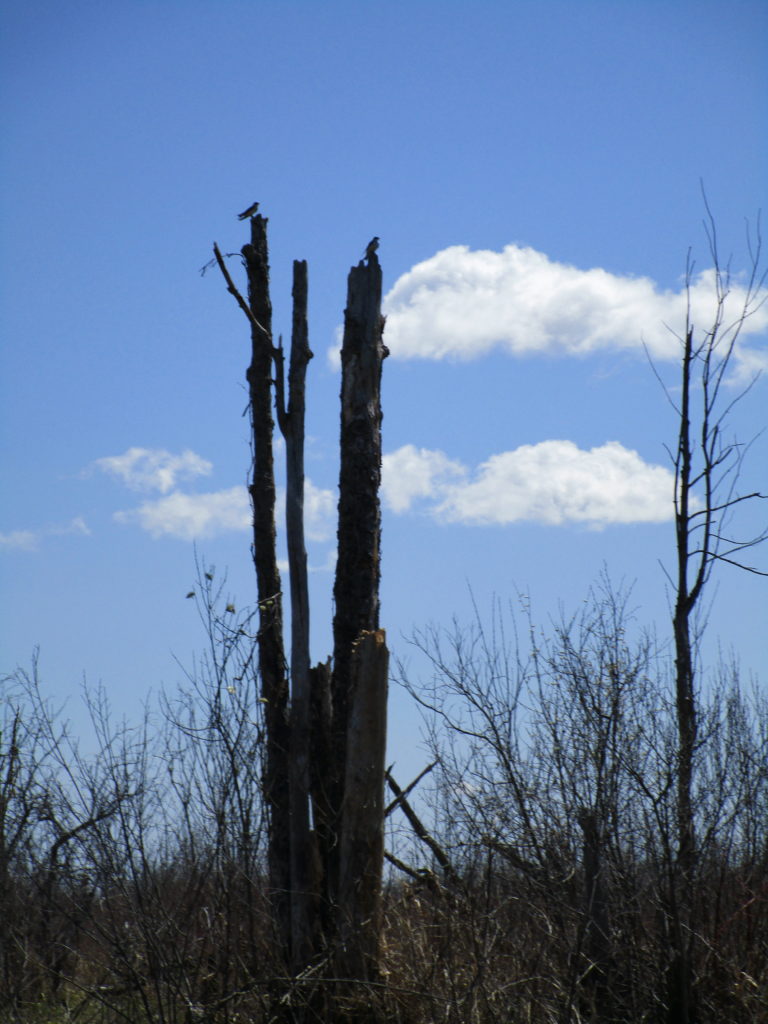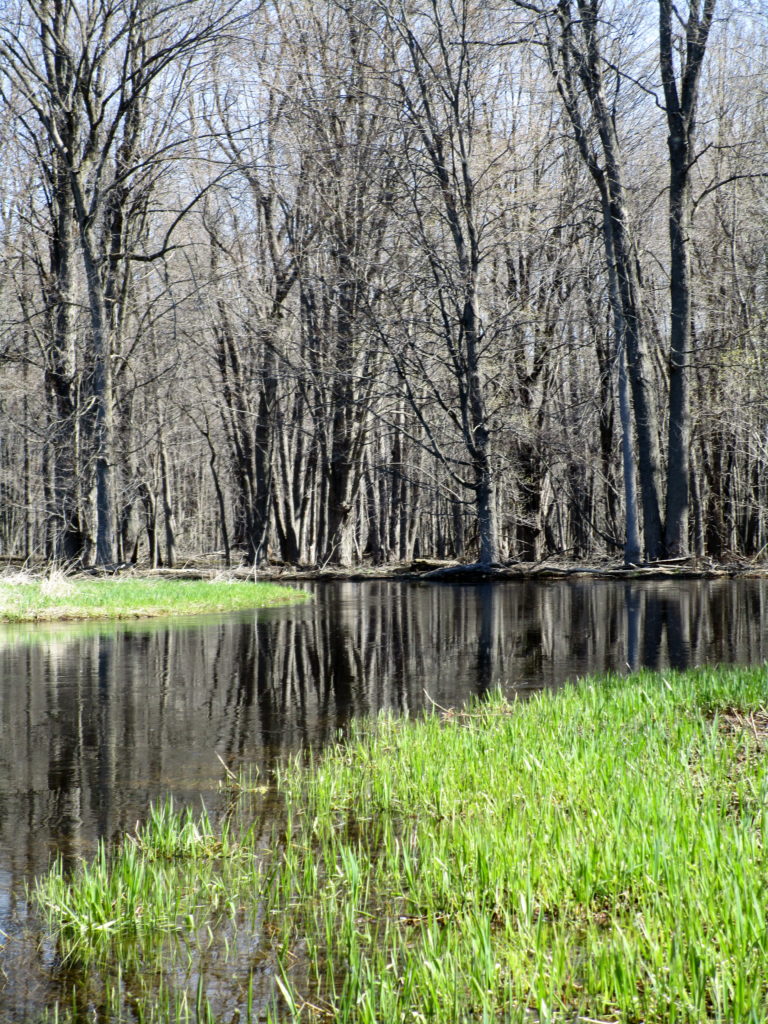On one of the first warm weekends of spring, I loaded a Vrtucar with my canoe, bicycle, and canoe trailer, and I headed to the Jock River. Leaving the car at Jock River Park in Richmond, I hooked the trailer and canoe on the bike and cycled into a stiff breeze out of the Village along Franktown Road. The gravel shoulder provided plenty of room for comfort, although sections remained soft from the previous day’s rains. A left turn on to Green’s Road and a right on to Jock Trail Road eventually took me to Munster Road, just a few meters from where it crosses the Jock River, 12 km by canoe from the Village. I hauled the canoe off the trailer and down the embankment, packed the bike and trailer in front, and set off down river.
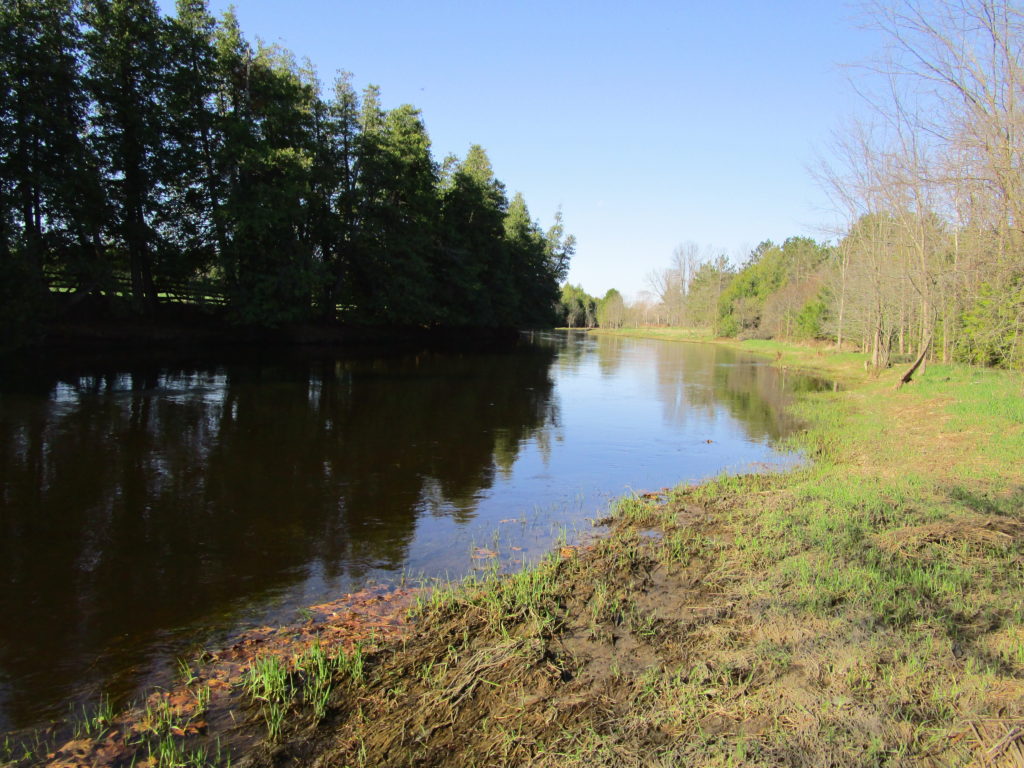
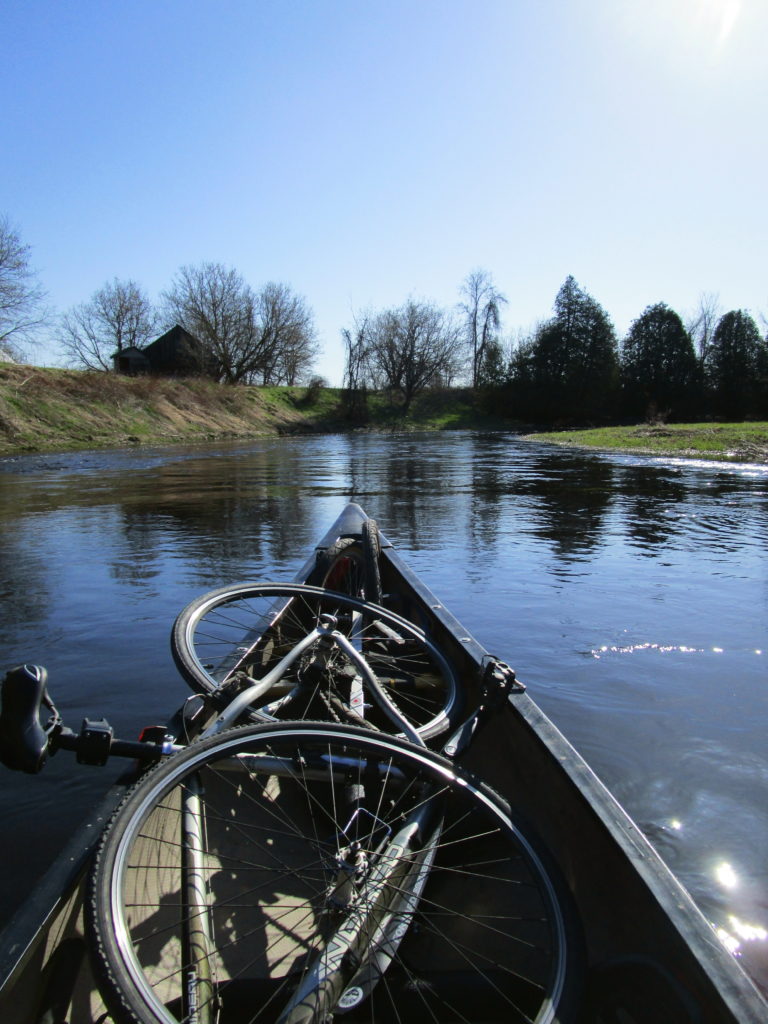
Some people, perhaps, might not consider the Marlborough Forest to extend as far north as the Jock River. For several kilometres, however, the river winds through the swampy north end of the Richmond Fen — the large, provincially-significant peatland that occupies much of the north half of the forest. In the spring, when the creek spills its banks, the swamp appears like some southern bayou, with huge red and silver maples rising from the water to spread overhead like the arches of a cathedral. Blackbirds and grackles call incessently and flit overhead. Wood ducks, mallards, and even a few a teal shelter in back bays and sunlight-dappled pools. Flocks of Canada geese rise noisily from the channel ahead of the canoe as I come around a bend. The scene is both ancient and timeless.
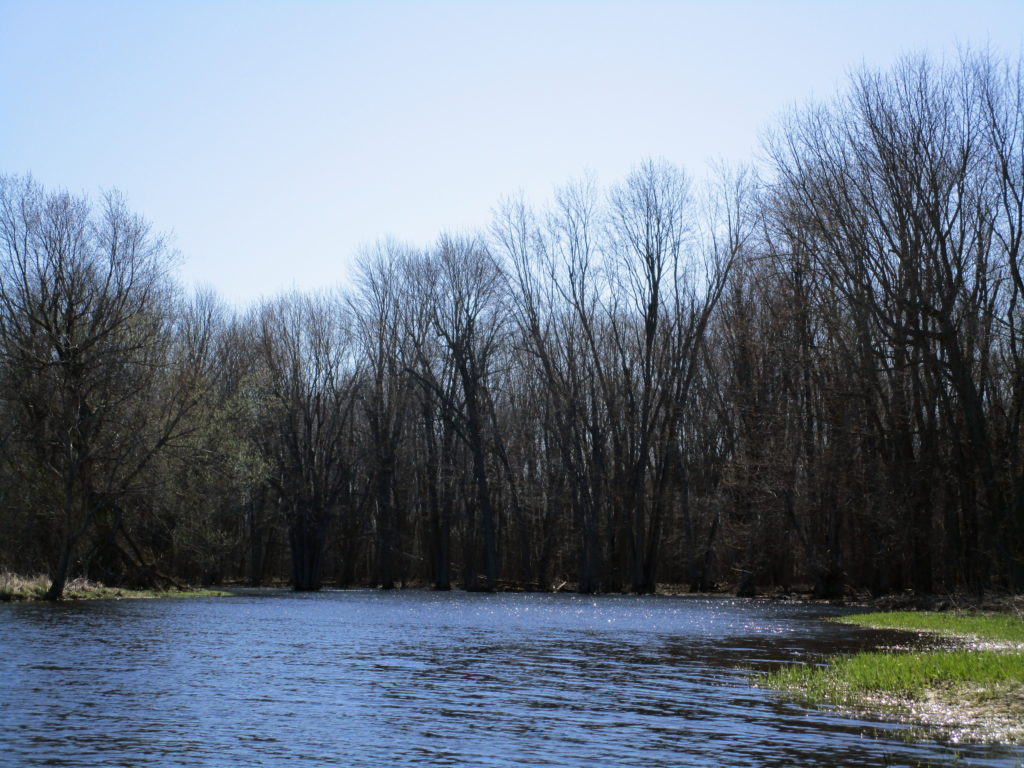
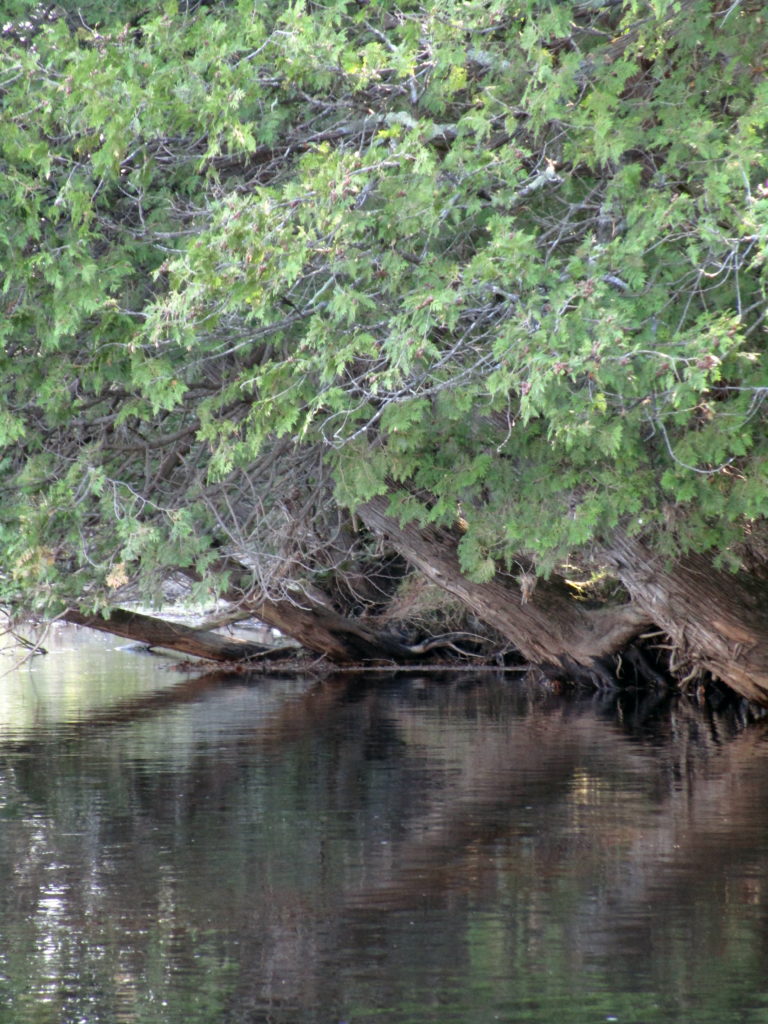
I can hardly imagine the hardships faced by the early settlers of Richmond and its surroundings in the early 19th century. Initially settled in 1818 by demobilized British and Irish soldiers of the 99th Regiment, the village languished for a long time, with little construction or settlement. According to histories of the area, the well-known settler Hamnett Pinhey said of Richmond in 1832, “if you get into it in the Spring, you can’t get out till Summer; and if you get into it in the Fall, you must wait till the Winter…”. The difficulties rose in large part, no doubt, because of the low, boggy land through which the Jock River runs. Much of that land has since been effectively drained for agriculture. However, even today, the swamps bordering the Richmond Fen extend far north of Franktown Road, and new developments on the low, west side of the village rely on sump pumps for dry basements.
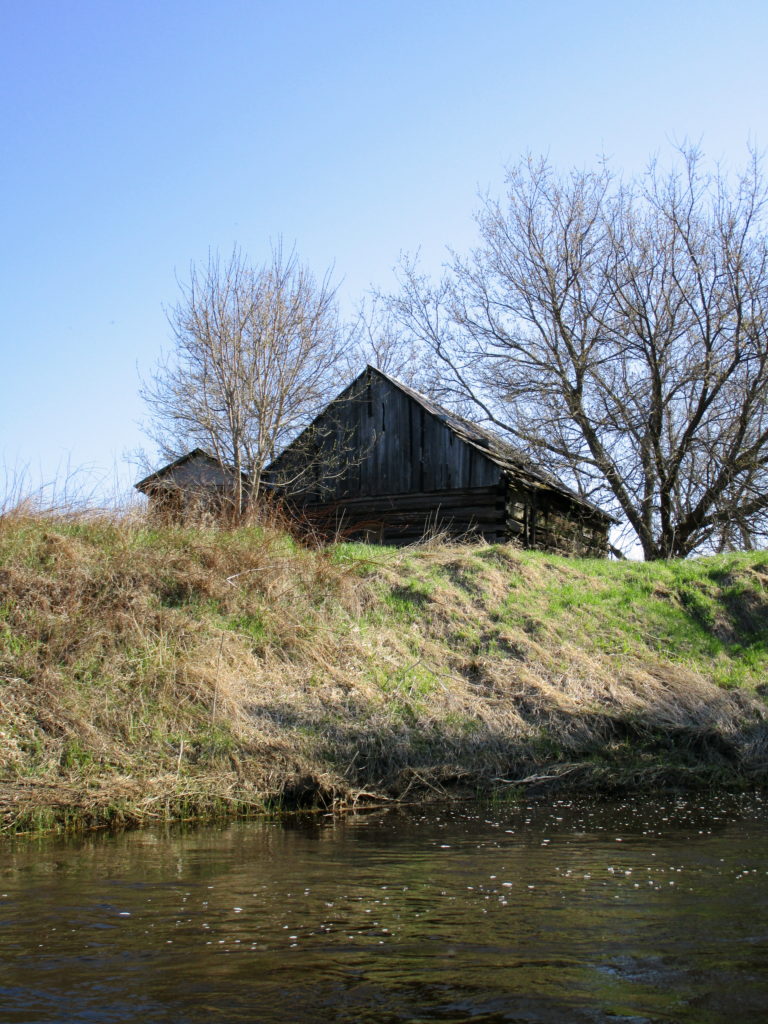
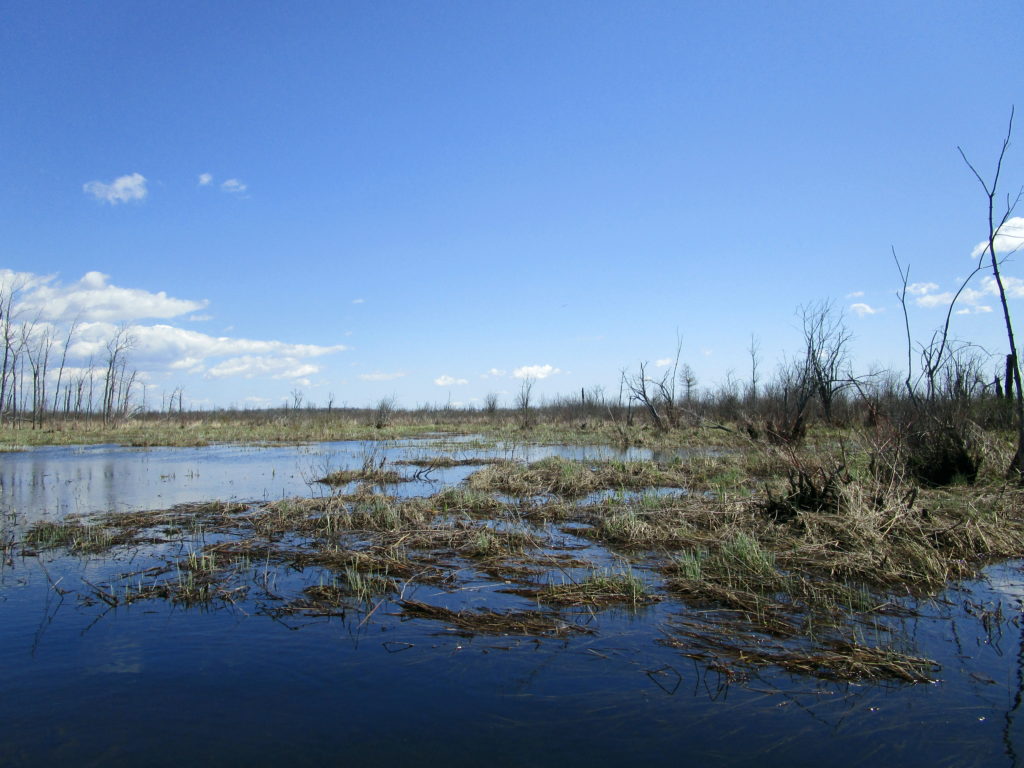
All of that swamp, however, plays a critical role in protecting the Village of Richmond, the suburb of Barrhaven, and much of the intervening farmland from serious flooding. On this particular spring morning, with the river running high, the main channel almost vanished in the swamp as the water flowed outwards into the forest, backwaters, and old oxbows. Spreading placidly over hundreds of hectares, the water slowed and calmed, like a charging bull finding itsef suddenly in a grassy meadow. Why the hurry? Further downstream, at the bottom end of the swamp, the water lazily eased back into the channel again, before running down some last riffles into the village.
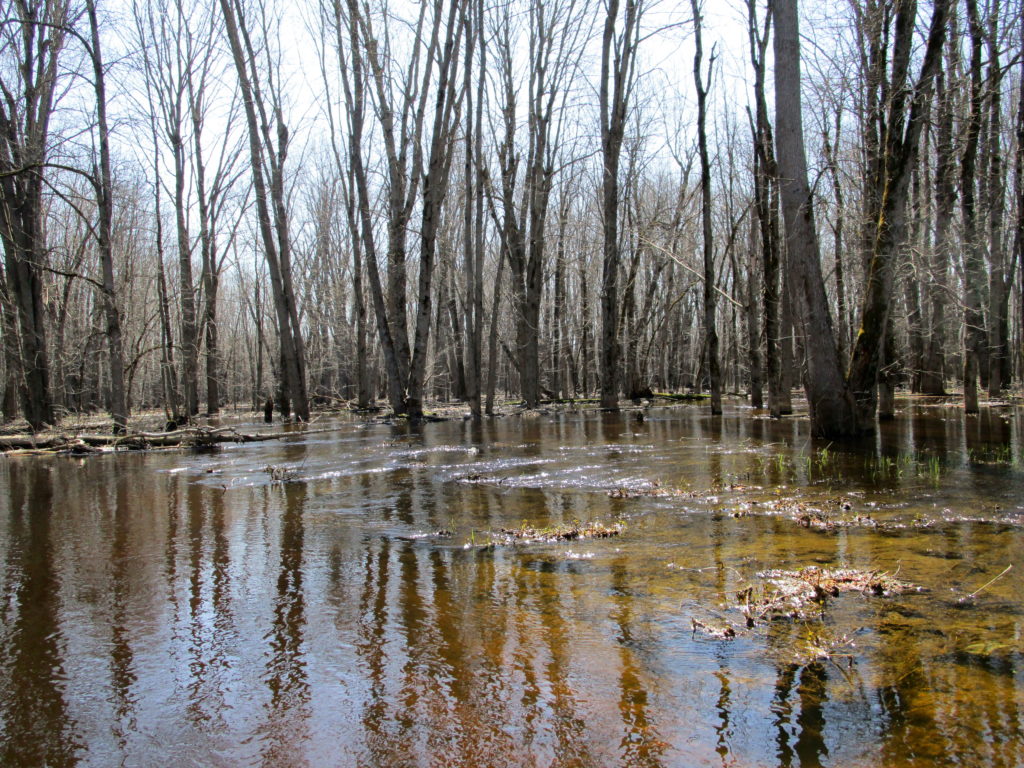
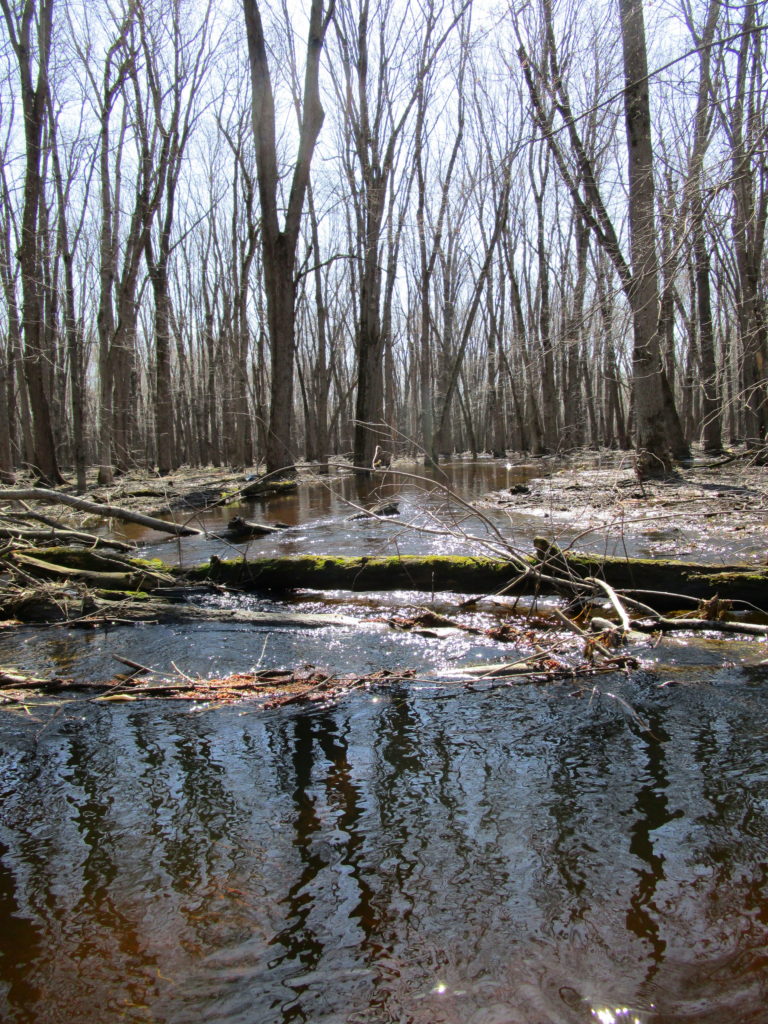
The Rideau Valley Conservation Authority has calculated that the wetlands in its watershed reduce peak flood levels by at least 10% by the time they reach Ottawa. More recent work by the Credit River Conservation Authority and Ducks Unlimited shows that local benefits — such as the influence of the Richmond Fen on the Village of Richmond — can be much greater. In fact, the influence goes much further downstream. Many of the new neighbourhoods and homes bordering the Jock River in Barrhaven simply could not be built safely without the protection provided by the Richmond Fen.
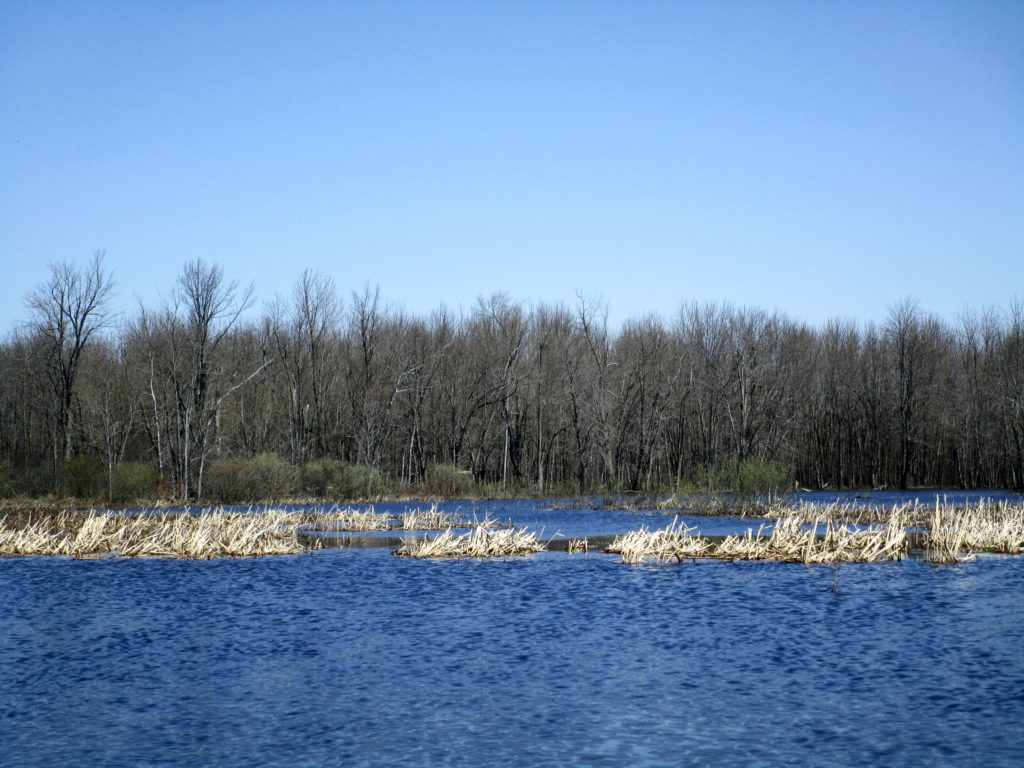
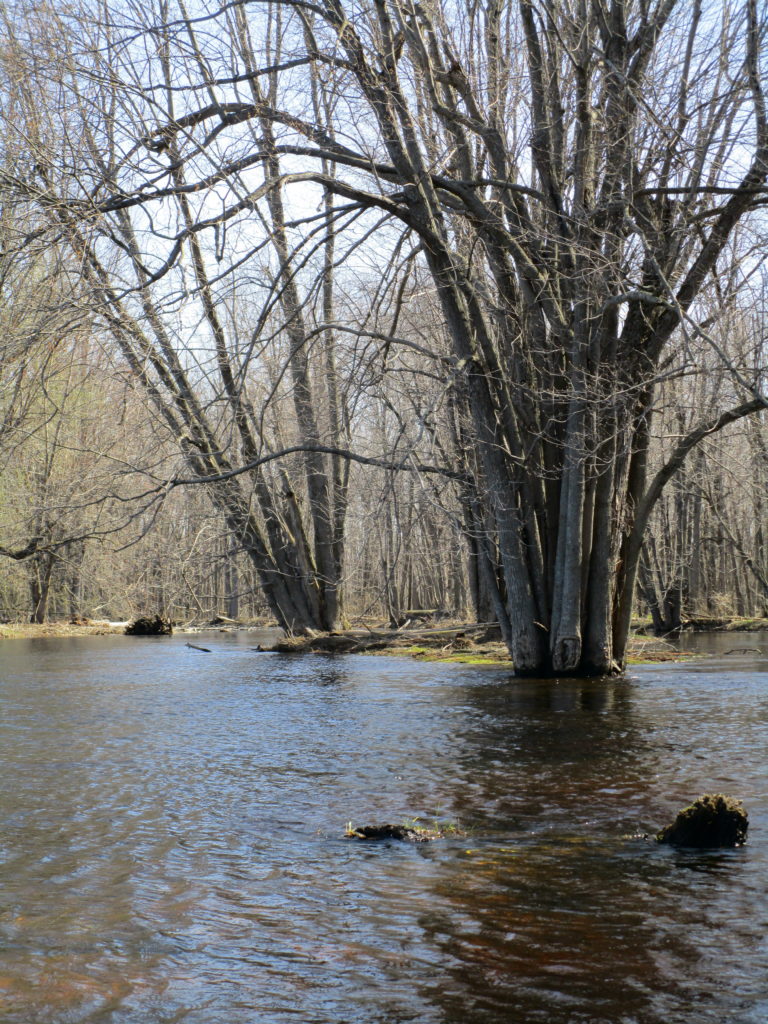
After a long winter, however, the poetic virtues of the swamp have more immediate appeal than the practical benefits: the warmth of the sun through the bare trees, the squak of a blue heron rising ahead, the dance of tree swallows over the water, the reflection of a silver maple in a glassy pool, the unfurling of a fern, the bright green of new grass and sedges on the shore. I dawdled down the river, detouring up side creeks and under the railway bridge into the moat (the “lagg”) surrounding the open fen. Whenever possible, I set down my paddle and leaned back with my elbows on the thwarts drifting with with the current and watching for turtles. A Cooper’s hawk passed overhead. A snapping turtle slid reluctantly into the stream. A carp swirled from the weedy shallows into the deeper water. The river carried me along.
